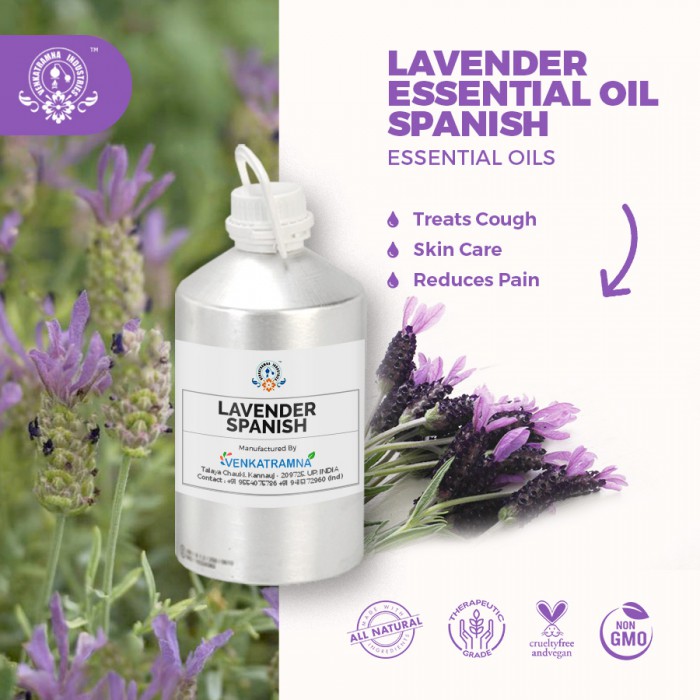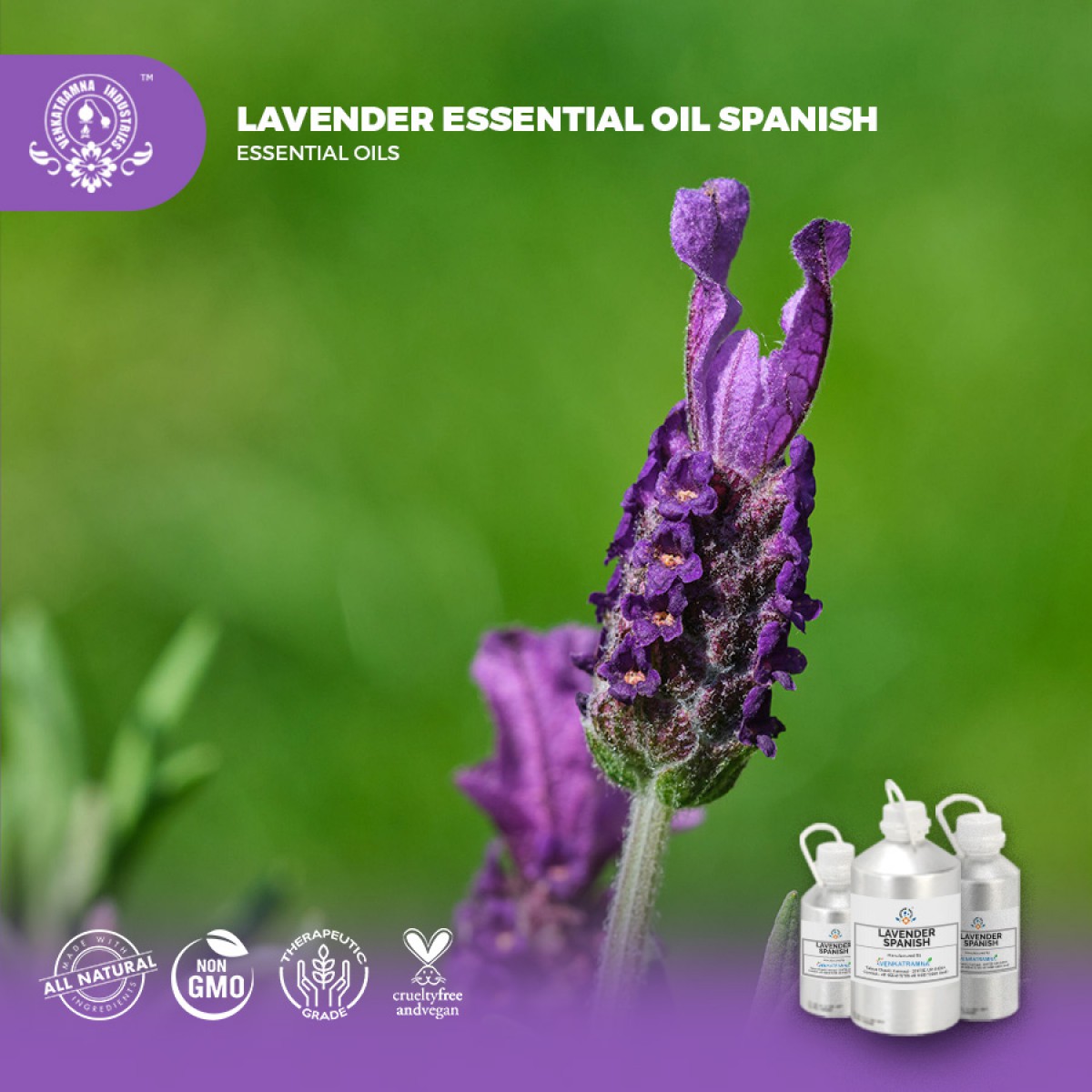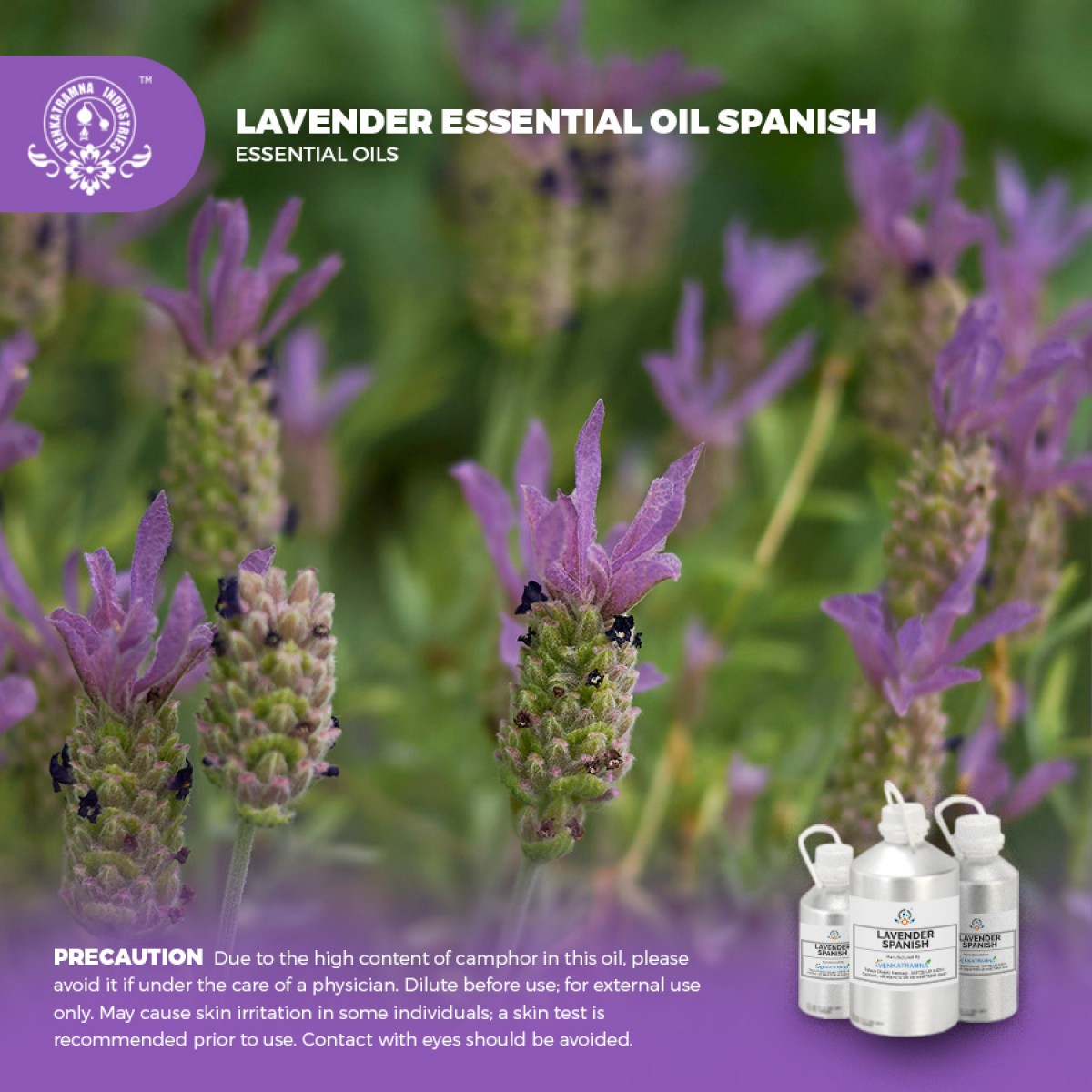Botanical Name: Lavandula stoechas Common name: Lavander Plant family Read More
|
Botanical Name: |
Lavandula stoechas |
|
Common name: |
Lavander |
|
Plant family: |
Lamiaceae |
|
Genus: |
Lavandula |
|
Appearance/Color: |
A thin, clear,
pale yellow liquid. |
|
Odor: |
A top note with a
strong aroma, Lavandin Oil has a strong, somewhat piercing, camphor-like
smell with some light, floral undertones characteristic of Lavender. |
|
Blends With: |
blends perfectly
with essential oils of Bergamot, Citronella, Lemongrass, Cinnamon, Rosemary,
Pinem, Jasmine, Thyme and Patchouli. |
|
Origin: |
Spanish |
|
Source: |
Flower |
|
Method of
Extraction: |
Steam Distillation |
Lavandin is an aromatic evergreen
shrub that is much larger than true Lavender. An evergreen woody shrub growing
to 3 feet high with green, narrow, linear leaves producing violet-blue flowers,
the entire plant is covered with oil glands, which are in the star-shaped hairs
that cover the plant. The flowering heads are more compressed with a dull, gray
blue color. This hybrid apparently evolved naturally near the seas in Spain,
Italy and France. It is now commercially produced in these same countries.
Lavandin is used almost exclusively for scent. Many commercial manufacturers
use both Lavandin Grosso and Lavandin Abrialis as replacements for Lavender
40/42, but they have a much rougher, camphorous scent. It is a popular choice
amongst both aromatherapists and massotherapists for its constituents and
pleasant floral scent.
Lavandin is the Latin genus
referring to Lavender. There are about 39 different recognized species of this
plant. Countless variations have been produced due to the ability to cross
pollinate with other members in the Lavender spices. Lavandula was thought to
originate in Asia but the greatest plant diversity is found in the western
regions of the world.
Essential oils are produced in the cells of aromatic plants and are held in specialized glands. They are released from the plant and collected (concentrated) most often through steam distillation (and sometimes hydro or water distillation or a combination thereof). Distillation is a method of separating components based on differences in volatile constituents in a heated mixture. Steam distillation involves bubbling steam through the plant material.
DISCLAIMER
The complete range of conditions
or methods of use are beyond our control therefore we do not assume any
responsibility and expressly disclaim any liability for any use of this
product. Information contained herein is believed to be true and accurate however,
all statements or suggestions are made without warranty, expressed or implied,
regarding accuracy of the information, the hazards connected with the use of
the material or the results to be obtained from the use thereof. Compliance
with all applicable federal, state, and local laws and local regulations
remains the responsibility of the user.
The FDA has not evaluated the
statements on this website. No claims are made by Venkatramna Industries as to
the medicinal value of any products from vriaroma.com or by us. The information
presented here is for educating our customers about the traditional uses of
essential oils and is not intended to diagnose, treat, cure, or prevent any
disease. You are responsible for understanding the safe application of these products.
If you have any questions, please call or email us for further information.
As per NAHA guidelines, New Directions Aromatics
(NDA) does not recommend the ingestion of essential oils. It is imperative to
consult a medical practitioner before using Essential Oils for therapeutic
purposes. Pregnant and nursing women and those taking prescription drugs are
especially advised not to use this product without the medical advice of a
physician. The oil should always be stored in an area that is inaccessible to
children, especially those under the age of 7.
The flowers of lavender are
fragrant in nature and have been used for making potpourri for centuries.
Traditionally, lavender essential oil has also been used in making perfumes.
It is an analgesic reduce pain and inflammation. Whether it’s pain in the muscles or joints, toothache, headache, coughs, colds or fevers, Lavandin Oil provides natural pain relief for ailments. It has rich antiseptic properties that can treat wounds. And it is powerful in preventing infections.
Its
intoxicating aroma can effectively boost self-esteem, confidence, hope and
mental strength, working together to combat symptoms of depression.
COMMON
USAGE
·
Heals Wounds
·
Cures Nervous Disorders
·
Treats Cough
·
Skin Care
·
Reduces Pain
·
Prevents Infections
·
Fights Depression
Ingredients:
|
S.No |
Key Constituents |
Strength (%) |
|
1 |
Camphor |
16.4–56.2% |
|
2 |
(?)-Fenchone |
14.9–49.1% |
|
3 |
1,8-Cineole |
3.6–14.5% |
|
4 |
?-Pinene |
3.4–4.5% |
|
5 |
Camphene |
2.8–5.5% |
|
6 |
Myrtenyl acetate |
2.0–4.3% |
|
7 |
Bornyl acetate |
1.8–3.1% |
|
8 |
Linalool |
0.8–2.2% |
|
9 |
Myrtenol |
0.6–2.4% |
|
10 |
?-3-Carene tr |
1.9% |
|
11 |
(?)-Limonene |
1.0–1.4% |
|
12 |
Ledol |
0.5–1.2% |
Safety summary
·
Hazards: May be neurotoxic, based on
camphor content.
·
Contraindications (all routes):
Pregnancy, breastfeeding.
·
Maximum adult daily oral dose 250 mg
·
Maximum dermal use level 8%
Safety advice
Oral and dermal restrictions are
based on 56.2% camphor content and camphor limits of 2 mg/kg/day and 4.5%.
Organ-specific effects
·
Adverse skin reactions: No information
found. Fenchone is relatively non-irritant and non-sensitizing.
Systemic effects
·
Acute toxicity: No information found. The
rat acute oral LD50 for fenchone is 6.16 g/kg. Camphor minimum LD50 is 1.7 g/kg
in rats. Camphor is potentially neurotoxic and is thought to be more toxic in
humans than in rodents.
·
Carcinogenic/anticarcinogenic potential:
No information was! found for Spanish lavender oil, but it contains no known
carcinogens.
Caution:
Due to the high content of
camphor in this oil, please avoid it if under the care of a physician. Dilute
before use; for external use only. May cause skin irritation in some
individuals; a skin test is recommended prior to use. Contact with eyes should
be avoided.
Comments:
The camphor content is
significantly higher than that of true lavender oil (<1%) Mainly produced in
Portugal, though the analysis above is from Corsican oils. Six subspecies are
known, stoechas being the most important.
·
Ecotoxicity: Harmful to aquatic life. May have
long lasting effects.
·
Bioaccumulation: No data available
·
Mobility in soil: No data available
·
Persistence and degradability: No data available
·
PBT and vPvB assessment: No data available
·
Avoid direct exposure into water streams and
ground water sources.





 MSDS-Lavender6.pdf
MSDS-Lavender6.pdf




